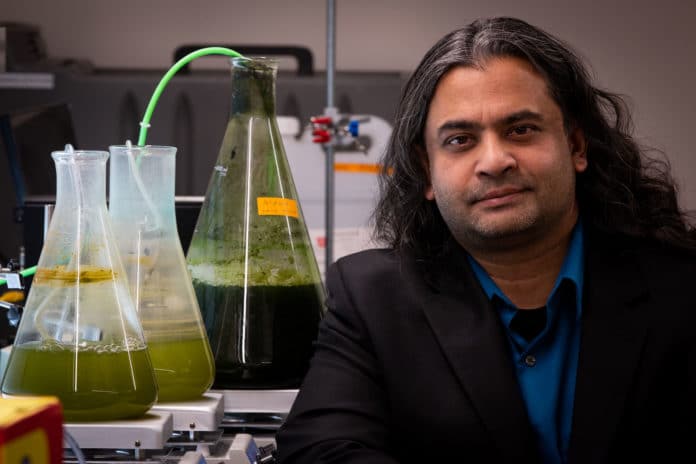High energy density transportation fuels remain essential to long distance transportation. However, scalable high energy density alternatives to fossil fuels remain challenging. Yet, microbial fuels show promise.
Now, University of Utah scientists come up with a way that delivers cost-effective algal biocrude in large quantities using a specially-designed jet mixer.
Traditional algae harvesting methods usually require dry algae powers or at minimum highly concentrated algae suspensions, which introduces additional energy-intensive steps into the algae processing flow sheet, a significant drawback for algal fuel production.
Lipids that usually packed inside the microorganisms growing in ponds, lakes, and rivers, actually are fatty acid molecules containing oil that can be extracted to power diesel engines.
At the point when extracted the lipids are called biocrude. That makes living beings, for example, microalgae an appealing type of biomass, organic matter that can be utilized as a practical fuel source. These lipids are additionally found in an assortment of other single-cell life forms, for example, yeasts utilized in cheese processing.
Yet, the issue with utilizing green growth for biomass has dependably been the measure of vitality it takes to pull the lipids or biocrude from the water plants. Under current strategies, it takes more vitality to transform green growth into biocrude than the measure of vitality you receive back in return.
The newly developed jet mixer here plays a vital role. The mixer can extract the lipids with much less energy than the older extraction method. Moreover, it is fast enough that it can extract the lipids in a few seconds.
Leonard Pease, a co-author of the paper said, “The key piece here is trying to get energy parity. We’re not there yet, but this is a really important step toward accomplishing it. We have removed a significant development barrier to making algal biofuel production more efficient and smarter. Our method puts us much closer to creating biofuels energy parity than we were before.”
University of Utah chemical engineering assistant professor Swomitra “Bobby” Mohanty, a co-author on the paper said, “There have been many laudable research efforts to advance algal biofuel, but nothing has yet produced a price point capable of attracting commercial development. Our designs may change that equation and put algal biofuel back in play.”
Originally, the jet mixer is a reactor that shoots jets of the solvent at jets of algae, creating localized turbulence in which the lipids “jump” a short distance into the stream of solvent. The solvent then is taken out and can be recycled to be used again in the process.
Mohanty said, “Our designs ensure you don’t have to expend all that energy in drying the algae and are much more rapid than competing technologies.”
Pease said, “This is game-changing. The breakthrough technologies we are creating could drive a revolution in algae and other cell-derived biofuels development. The dream may soon be within reach.”
The study is published in a new peer-reviewed journal, Chemical Engineering Science X.
